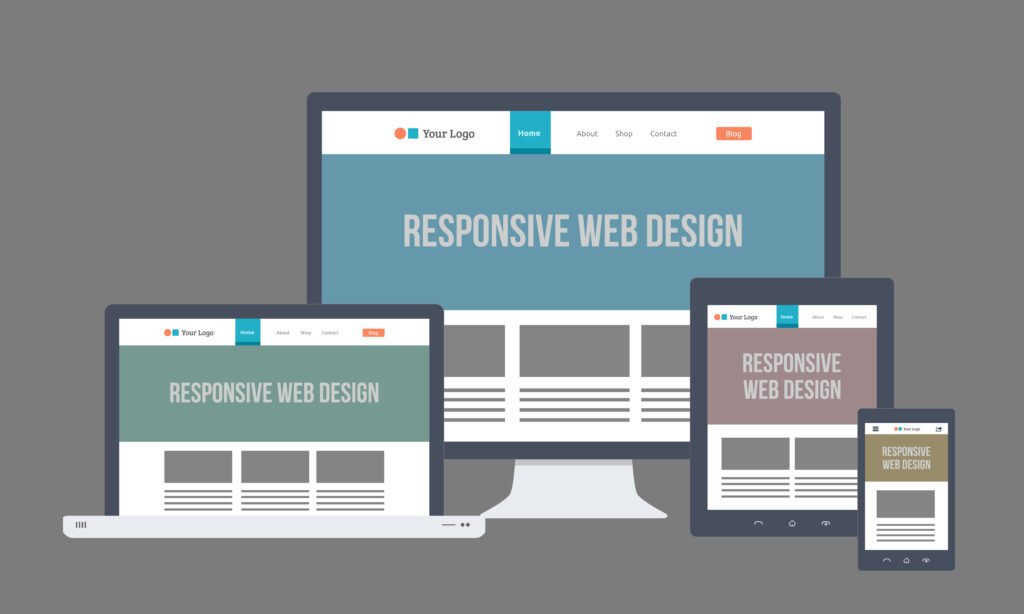Introduction
In the fast-paced world of web development, staying ahead of the curve is crucial. Whether you are a seasoned developer or just starting, using the right tools can significantly impact your workflow, efficiency, and the quality of your projects. As we move into 2024, the landscape of web development tools has expanded, offering more options to streamline coding, design, testing, and deployment processes. This post provides a detailed guide on the essential web development tools you should incorporate into your workflow in 2024 to stay competitive and efficient.
1. Code Editors
A code editor is the heart of web development. It’s where you write, edit, and manage your code. The features and customization options offered by modern code editors can greatly enhance productivity. Let’s take a look at some of the top choices for 2024:
Visual Studio Code (VSCode)
Visual Studio Code, developed by Microsoft, remains the most popular code editor in 2024. It’s lightweight but packed with powerful features, making it suitable for both small and large projects. VSCode offers:
- IntelliSense: Provides smart completions based on variable types, function definitions, and imported modules.
- Integrated Git: Allows developers to manage version control directly from the editor.
- Extensions Marketplace: A rich library of extensions that offer language support, debugging, linting, and more.
- Customization: Highly customizable with various themes and keybindings to suit your personal preferences.
Sublime Text
Sublime Text is known for its speed and efficiency. Although lightweight, it supports a wide range of programming languages and offers features such as:
- Multi-line Editing: You can select multiple lines and edit them simultaneously.
- Command Palette: Allows quick navigation between files and functions.
- Cross-Platform: Available for Windows, macOS, and Linux.
Atom
Developed by GitHub, Atom is another top choice in 2024. Atom is an open-source, highly customizable text editor with integrated Git control. Its main features include:
- Teletype for Collaboration: Allows real-time collaboration with other developers.
- GitHub Integration: Direct access to GitHub repositories within the editor.
- Cross-Platform: Works across multiple operating systems.
2. Version Control Tools
Version control is essential for managing changes in your codebase, especially in team-based environments. It ensures you can track every change made, collaborate efficiently, and revert to previous versions if needed.
Git
Git is by far the most widely used version control system, and in 2024, it continues to be a developer’s best friend. Git allows you to:
- Track Changes: Keep a history of changes made to the codebase.
- Branching and Merging: Work on multiple features or bug fixes simultaneously, then merge them into the main codebase when ready.
- Collaboration: Allows teams to work on the same project without overwriting each other’s work.
Paired with platforms like GitHub, GitLab, or Bitbucket, Git allows you to collaborate on projects, manage repositories, and host code in the cloud.
GitHub Copilot
GitHub Copilot is an AI-powered tool that integrates with VSCode to help you write code faster. It provides contextual suggestions and autocompletes based on the code you’re currently writing. This AI tool helps reduce time spent on boilerplate code and improves coding efficiency.
3. Web Development Frameworks and Libraries
Web development frameworks and libraries offer pre-built components, functions, and guidelines that help developers create applications faster, ensuring they follow best practices. In 2024, these are some of the top frameworks and libraries to streamline your projects:
React
React, maintained by Facebook, remains one of the most popular JavaScript libraries for building user interfaces. It’s particularly favored for creating single-page applications (SPAs) due to its component-based structure. With React:
- Component Reusability: Create reusable components, which can drastically reduce the redundancy in your code.
- Virtual DOM: The virtual DOM optimizes updates and renders, enhancing performance.
- React Hooks: Simplify state and side-effect management within functional components.
Next.js
Next.js is a React-based framework that adds powerful features like server-side rendering (SSR) and static site generation (SSG). This improves SEO, performance, and user experience. Key features include:
- SSR and SSG: Great for SEO as pages are pre-rendered, making them crawlable by search engines.
- API Routes: Allows you to build an API within the same project, removing the need for an external backend.
- Optimized Performance: Automatically optimizes your JavaScript and CSS for faster loading.
Vue.js
Vue.js is a progressive framework ideal for building interactive UIs and SPAs. It’s flexible and easy to integrate into projects of any size. Vue is known for:
- Reactive Data Binding: Simplifies the process of updating the DOM when data changes.
- Lightweight: Vue.js is known for its smaller file size and quicker load times.
- Great Documentation: Vue’s well-written documentation makes it easier for beginners to get started.
Tailwind CSS
Tailwind CSS is a utility-first CSS framework that has gained tremendous popularity for its flexibility and ease of use. Instead of writing custom CSS, developers can use utility classes to style their elements. Benefits include:
- Utility-First: Encourages a component-based design approach, making it easier to maintain styles.
- Customization: Offers full control over your styles, while still allowing developers to create custom designs rapidly.
- Responsive Design: Built-in classes allow you to easily create responsive designs without writing media queries.
4. Design and Prototyping Tools
The design stage is a critical part of web development, as it defines how users will interact with the site. These tools help you design and prototype your web projects:
Figma
Figma is a cloud-based design tool that has taken the web design world by storm. It allows designers and developers to collaborate in real time on projects. Key features include:
- Real-time Collaboration: Multiple team members can work on the same design file simultaneously.
- Prototyping: Allows designers to create interactive prototypes and test user flows.
- Cross-Platform: Since it’s web-based, Figma can be accessed from any operating system.
Adobe XD
Adobe XD is a popular design tool for UI and UX design. Its powerful prototyping features make it a great tool for creating interactive and responsive design mockups. Features include:
- Repeat Grid: Speeds up the process of creating lists or grids of similar items.
- Plugins: A wide range of plugins is available to extend the functionality of the tool.
- Prototyping: Lets you create clickable prototypes to share with stakeholders for testing.
Sketch
Sketch is a vector graphics editor specifically designed for UI and UX design. It’s ideal for creating pixel-perfect designs. Although Sketch is only available for macOS, it’s widely used by designers due to its:
- Symbols and Reusability: Offers reusable elements, which helps in maintaining design consistency.
- Vector Editing: Allows for precise editing of designs.
- Design Systems: Helps teams create and manage design systems, ensuring consistency across projects.
5. Testing and Debugging Tools
Testing and debugging are essential to ensure your web application works flawlessly across different browsers and devices. These tools simplify the testing process:
Jest
Jest is a JavaScript testing framework maintained by Facebook. It’s popular for testing React applications but works with any JavaScript-based project. Features include:
- Snapshot Testing: Automatically generates snapshots of your components and compares them to previous versions.
- Mocking Functions: Allows developers to test functions in isolation without affecting the rest of the code.
- Ease of Use: The setup is simple, and it provides clear error messages and test results.
Cypress
Cypress is an end-to-end testing framework that simplifies the process of testing web applications. Its features include:
- Real-time Reloading: Allows you to test your application in real time as you make changes.
- DOM Manipulation: Cypress gives you access to the entire DOM, allowing you to interact with elements and assert their behaviors.
- Debugging: Provides comprehensive tools for debugging failed tests with clear messages and a time-traveling feature to see exactly what went wrong.
Lighthouse
Lighthouse is an open-source tool from Google that audits web applications for performance, accessibility, SEO, and more. Features include:
- Performance Insights: Helps you identify bottlenecks and provides recommendations to optimize your site’s performance.
- SEO Auditing: Provides insights on improving your website’s SEO for better search engine rankings.
- Accessibility: Checks your site for accessibility issues and suggests fixes to make it more user-friendly.
6. Deployment Platforms
Deploying web applications is now easier than ever, thanks to modern platforms that automate deployment and optimize performance.
Vercel
Vercel is a cloud platform for deploying static websites and serverless functions. It’s built for modern web frameworks like Next.js and provides features like:
- Serverless Functions: Deploy serverless functions alongside your frontend code.
- Automatic Deployments: Automatically deploys changes from your GitHub or GitLab repository.
- Edge Network: Vercel uses a global edge network to deliver content faster to users worldwide.
Netlify
Netlify is another popular platform for deploying static websites. It integrates seamlessly with version control systems, making the deployment process simple and automated. Key features include:
- Continuous Deployment: Automatically deploys changes every time you push to your Git repository.
- Serverless Functions: Allows you to run backend logic without managing servers.
- Form Handling: Automatically processes form submissions without needing a separate backend.
Conclusion
In 2024, the world of web development is thriving with powerful tools that simplify everything from coding to deployment. Leveraging the right mix of code editors, version control tools, frameworks, design tools, testing tools, and deployment platforms can significantly enhance your workflow and the quality of your projects. Staying updated with these essential tools will keep you competitive and productive as you build the web of tomorrow.
For professional web development services using the latest tools and technologies, visit TechsterTech.com. Let us help you create high-performance, modern websites.



